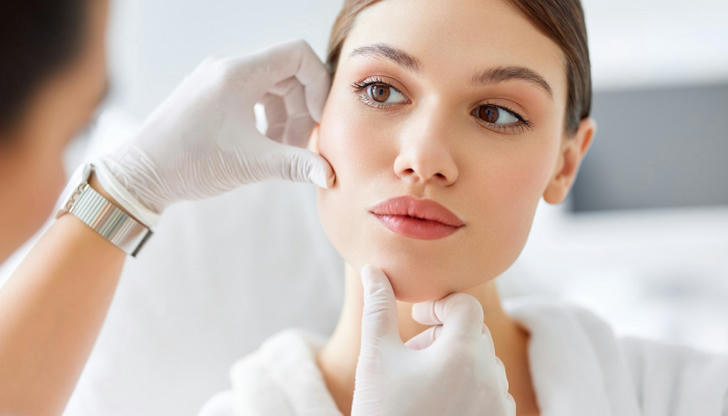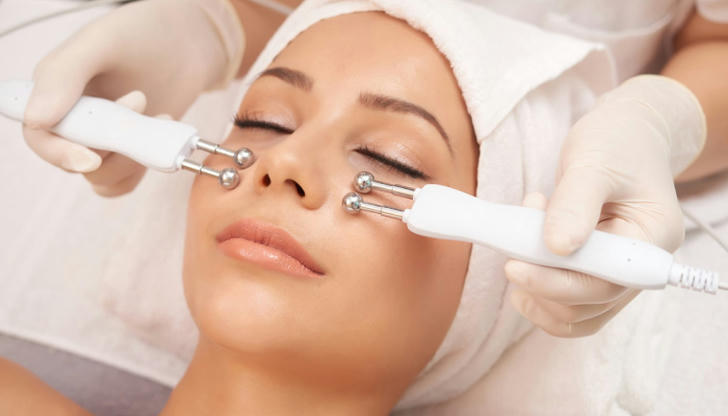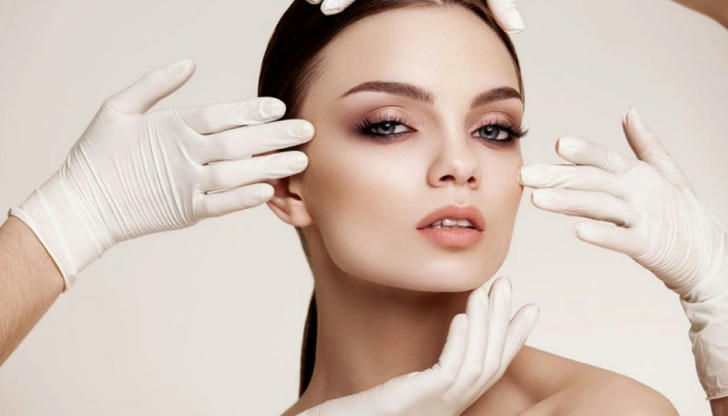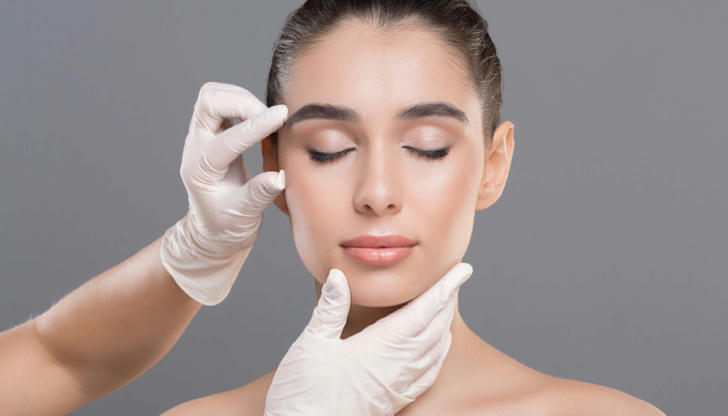Understanding User Thinking and Grasping the Core of Aesthetic Medicine Development

Aesthetic medicine, a rapidly growing sector in the healthcare and beauty industries, focuses on enhancing an individual’s appearance through non-surgical interventions. As the demand for aesthetic treatments increases, businesses in this field must understand their users’ needs and desires to remain competitive and relevant. This requires not only a deep understanding of customer behavior but also an ability to anticipate future trends and preferences. In this context, "user thinking" becomes a critical concept for businesses in aesthetic medicine. By grasping the core of user thinking, companies can tailor their services, develop innovative solutions, and provide a personalized experience that meets the evolving demands of clients. This essay explores the concept of user thinking, the role it plays in the development of aesthetic medicine, and the ways businesses can adapt to enhance customer satisfaction and market share.
The Concept of User Thinking
"User thinking" refers to the cognitive process and behavior patterns that drive how customers make decisions, interact with services, and form preferences. It involves understanding the psychology, motivations, and expectations of consumers, which is critical in providing services that resonate with their needs. In aesthetic medicine, user thinking goes beyond superficial desires like beauty and appearance; it taps into deeper psychological needs related to self-esteem, personal identity, and social influence. Users often seek aesthetic treatments not only to enhance their looks but also to boost their confidence, improve their quality of life, and express their personal identity. Understanding these layers of motivation allows aesthetic medicine practitioners and businesses to offer services that address both functional and emotional needs. The shift toward a more user-centered approach in the medical field has been evident in other industries, such as tech and retail. Companies that emphasize understanding user behavior and emotions have achieved success by creating services that feel relevant, timely, and authentic to consumers. The same principle applies to aesthetic medicine, where businesses must build a strong emotional connection with their clients to stand out in an increasingly competitive market.
The Key Drivers of Aesthetic Medicine Demand
The global aesthetic medicine market has expanded rapidly in recent years, driven by several key factors. Understanding these factors is essential for grasping the core of the sector’s growth and determining how businesses can align their strategies with customer expectations.
- The Pursuit of Youth and Beauty One of the primary drivers of aesthetic medicine is the desire to look youthful and beautiful. As people age, there is a natural inclination to seek ways to maintain or enhance their appearance. In societies where youth and beauty are highly valued, aesthetic treatments such as botox injections, dermal fillers, and non-invasive facelifts are in high demand. Social media and celebrity culture also play a significant role in shaping beauty standards, with many individuals seeking to emulate the appearance of influencers and public figures. This trend has created an environment where aesthetic treatments are no longer seen as superficial, but rather as a way of achieving social and professional success. Many individuals, especially in image-conscious industries, view aesthetic interventions as an investment in their personal and professional identity.
- Technological Advancements in Treatments Technology has played a pivotal role in the growth of aesthetic medicine. The development of minimally invasive procedures with minimal recovery time has made aesthetic treatments more accessible to a wider range of people. Non-surgical solutions, such as laser skin treatments, fat reduction procedures, and injectable treatments, have revolutionized the field by providing effective results with less risk and lower costs compared to traditional surgical options. The integration of artificial intelligence (AI) and machine learning in diagnostic tools also allows practitioners to better understand patients’ needs and tailor treatments to achieve the desired outcomes. Technological innovations have made aesthetic medicine safer, more precise, and more affordable, which has contributed to the increasing demand for these treatments.
- Changing Attitudes Towards Aging In recent years, there has been a significant cultural shift in attitudes towards aging. While older generations may have accepted aging as an inevitable process, younger generations are increasingly adopting a proactive approach to maintaining their appearance and health. This has led to the rise of preventative aesthetic treatments, such as botox injections and dermal fillers, even in people in their late twenties and thirties. Social acceptance of cosmetic procedures has become more widespread, and many individuals now view these treatments as part of their overall wellness routine. With greater accessibility to treatments, aging is no longer seen as something to be feared, but as a stage of life that can be managed through aesthetics.
- Rising Disposable Incomes As disposable incomes rise, especially in emerging markets, more people can afford to invest in aesthetic treatments. Economic development in countries such as China, India, and Brazil has increased the number of consumers seeking cosmetic procedures. While in the past, aesthetic treatments were largely associated with wealthy individuals, today they are more democratized, reaching a middle-class audience that values self-care and appearance enhancement. This rising economic capacity has also led to the emergence of medical tourism in the aesthetic medicine industry, where people travel across borders to access high-quality services at more affordable prices.
The Role of User Thinking in Aesthetic Medicine Development

In light of the key drivers outlined above, user thinking plays a crucial role in understanding and navigating the evolving aesthetic medicine landscape. To succeed in this field, businesses must go beyond offering effective treatments and focus on providing a user-centric experience that resonates with customers' psychological, emotional, and social needs.
- Personalization of Services One of the most important ways to align with user thinking in aesthetic medicine is through the personalization of services. Each customer has unique needs, desires, and expectations, and offering tailored solutions is crucial to providing an outstanding customer experience. Personalized aesthetic consultations, where practitioners take the time to understand the client’s goals, concerns, and preferences, are increasingly popular. By using advanced imaging technologies, such as 3D facial scans or skin analysis tools, clinics can better predict the outcomes of treatments and design plans that align with a client’s ideal results. Offering personalized treatment plans, which may include a combination of non-invasive treatments or skincare regimens, helps build trust and satisfaction.
- Building Emotional Connections Aesthetic treatments are often driven by emotional motivations. Many clients undergo procedures to enhance their self-esteem, boost their confidence, or feel more attractive in a social context. For this reason, establishing an emotional connection with clients is vital. Clinics that take a consultative approach—listening carefully to clients’ concerns and providing emotional support—tend to foster deeper relationships. Offering a welcoming, non-judgmental environment where clients feel heard and understood can make a significant difference in a clinic’s success. Emotional connections build trust, and trust leads to repeat clients and positive referrals.
- Transparency and Education Educating clients about the procedures, benefits, risks, and expected results is another key aspect of aligning with user thinking in aesthetic medicine. Many individuals may have concerns or misunderstandings about certain treatments, so providing clear and accurate information helps manage expectations and promotes a sense of trust and security. Transparency also involves clear pricing structures, before-and-after results, and honest discussions about potential risks or limitations of a procedure. When businesses are transparent and well-informed, they demonstrate a commitment to the client’s well-being, which ultimately enhances the brand’s credibility and reputation.
- Creating a Seamless Customer Journey A seamless customer journey is essential in keeping clients engaged and satisfied. From the first interaction with the clinic to post-treatment follow-up, the entire experience should be smooth, convenient, and hassle-free. Offering online booking systems, virtual consultations, and easy access to aftercare advice are some of the ways businesses can make the customer journey more efficient. User-centered design principles can be applied to every touchpoint in the business, ensuring that clients feel valued and cared for at every stage of their interaction. Whether through user-friendly websites, mobile apps, or prompt customer service, creating a frictionless experience is key to meeting and exceeding customer expectations.
Real-World Examples of User-Centered Aesthetic Medicine

Several successful companies have exemplified the importance of understanding user thinking in the development of aesthetic medicine.
- Ideal Image Ideal Image, a leading provider of non-surgical aesthetic treatments, has built a strong brand by focusing on user needs and delivering personalized services. Through detailed consultations and customized treatment plans, Ideal Image offers a range of services such as Botox, laser hair removal, and CoolSculpting, all tailored to each client’s specific goals. Their approach to education is also noteworthy. Ideal Image provides clients with a wealth of information on their treatments, ensuring transparency about the process and outcomes. This approach has helped build a loyal customer base, with clients returning for multiple treatments over the years.
- Allē by Allergan Allē, the rewards program created by Allergan, a global leader in aesthetic medicine, is another great example. The program is based on understanding user thinking and offering incentives that align with clients' desires for both beauty and value. Through Allē, customers earn points for purchasing products like Botox or Juvederm, which can later be redeemed for discounts on future treatments. This incentivized loyalty program speaks directly to the users' desire for more cost-effective options while still receiving high-quality treatments.

Conclusion
The development of aesthetic medicine hinges on understanding user thinking—grasping the motivations, desires, and psychological needs of clients is fundamental to offering services that resonate deeply. As the demand for aesthetic treatments continues to grow, businesses must tailor their services to meet the diverse and evolving expectations of their clientele. By focusing on personalization, emotional connection, education, and transparency, companies can stay ahead of market trends, build trust, and foster long-term customer loyalty. With the right understanding of user behavior, aesthetic medicine businesses can continue to thrive and lead in an increasingly competitive market.
